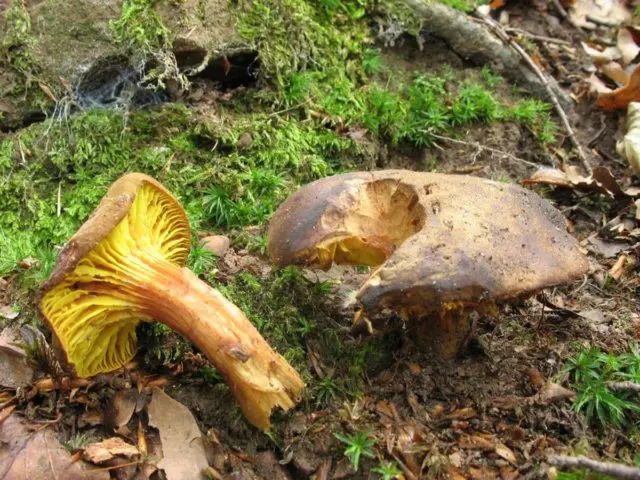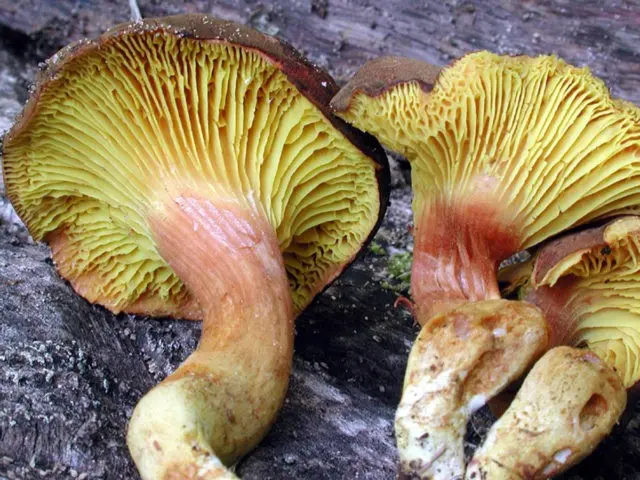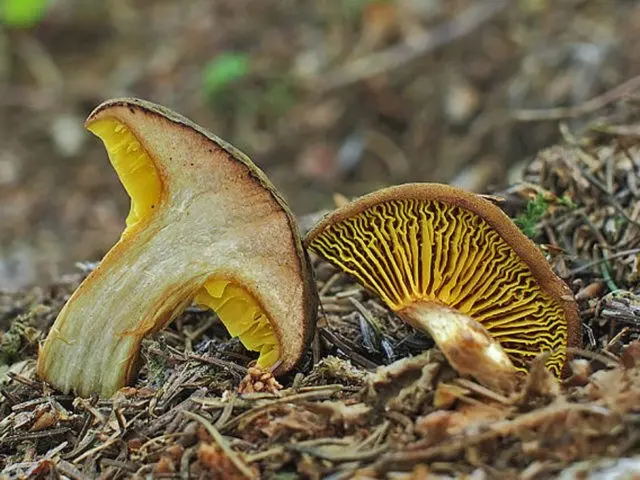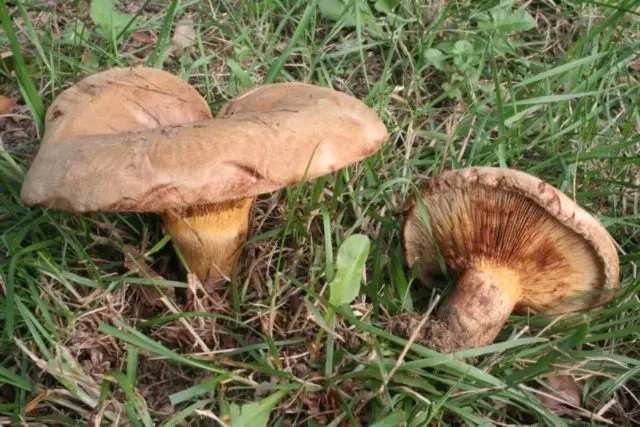Contents
Phylloporus rose-gold belongs to the rare species of edible mushrooms of the Boletaceae family, it bears the official name Phylloporus pelletieri. It is protected as a rare and poorly studied species. It was first found by a French botanist in the second half of the 19th century. Other names for this species: Phylloporus paradoxus, Agaricus pelletieri, Boletus paradoxus.
What does rose gold phylloporus look like?

Phylloporus rose-gold is a kind of transitional form between agaric and tubular fungi, which is of particular interest to specialists. Appearance: a strong thickened leg, on which a massive hat is located. Grows in small groups.
Cap Description

Initially, the shape of the cap in young specimens is convex with a tucked edge. But as it matures, it becomes flattened, slightly depressed. At the same time, the edge begins to hang down. The velvety surface has a brown-red color, but in mature mushrooms it becomes smooth and slightly cracked.
On the reverse side – thick yellow-golden plates, interconnected by branched descending bridges. When touched, a wax coating is felt.
Description of the leg

The leg of the phylloporus is pink-gold of medium density, yellowish in color. Its length is 3-7 cm, thickness is 8-15 mm. The shape is cylindrical, curved, with longitudinal ribs. The pulp has a mild mushroom smell and taste.
Is the mushroom edible or not?
This species belongs to the category of edible mushrooms. But it does not represent a special nutritional value due to its low meatiness and rarity.
Where and how to grow
It grows in deciduous, mixed and coniferous forests. Most often found under oak, hornbeam, beech, less often under conifers. The active growth period is from July to October.
In Our Country, it can be found in regions with a warm climate.
Twins and their differences
According to external signs, the pink-golden phylloporus is in many ways similar to the slightly poisonous thin pig. The main difference of the latter is the correct plates on the back of the cap. In addition, when the fruiting body is damaged, it changes its color to rusty brown.

Conclusion
Phylloporus rose-gold for ordinary mushroom pickers is not of particular value. Therefore, it is not recommended to collect it due to the low prevalence and rarity of the species.









